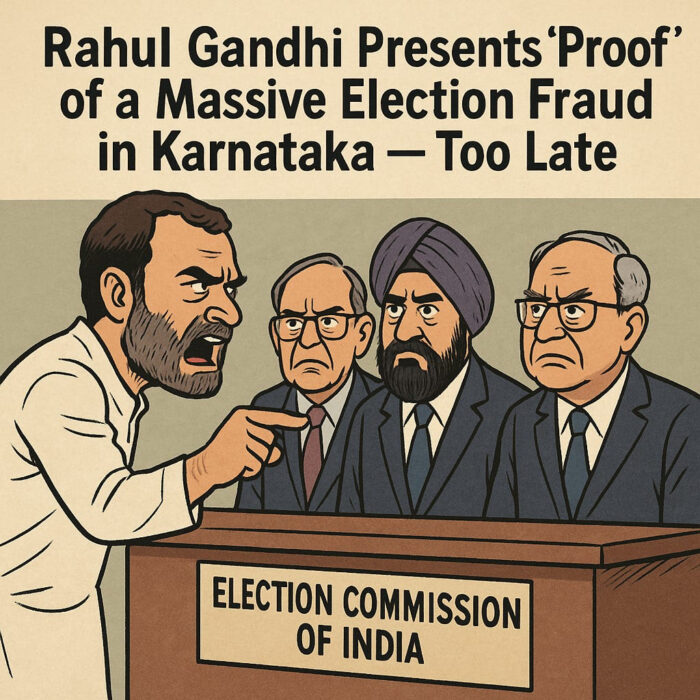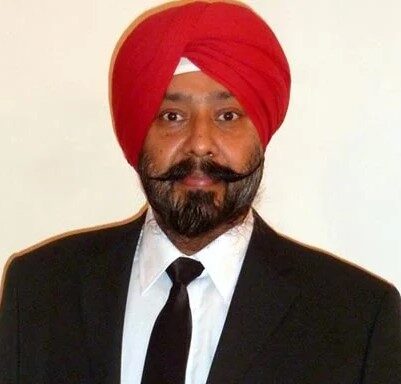 In the 2024 Lok Sabha election, the Bangalore Central parliamentary seat was won by the BJP’s P.C. Mohan with a margin of 32,707 votes over Congress candidate Mansoor Ali Khan. At face value, this appears to be a routine contest between two strong candidates in a politically competitive urban seat. However, a deeper disaggregation of results across the eight Assembly segments that comprise this constituency points to a serious anomaly—one that warrants institutional scrutiny.
In the 2024 Lok Sabha election, the Bangalore Central parliamentary seat was won by the BJP’s P.C. Mohan with a margin of 32,707 votes over Congress candidate Mansoor Ali Khan. At face value, this appears to be a routine contest between two strong candidates in a politically competitive urban seat. However, a deeper disaggregation of results across the eight Assembly segments that comprise this constituency points to a serious anomaly—one that warrants institutional scrutiny.
Out of the eight segments, Congress led in six and the BJP in two. But in one of those two—Mahadevapura—the BJP recorded a lead of over 1,07,000 votes, more than three times its Assembly margin from just a year earlier in the 2023 Vidhan Sabha elections. This margin alone was sufficient to nullify the leads that the Congress had built up in the other seven segments combined. Mahadevapura, in effect, decided the parliamentary outcome by itself.
2023 Assembly vs. 2024 Lok Sabha: What Changed?
In the 2023 Assembly polls, the BJP’s Manjula Aravind Limbavali won Mahadevapura with a respectable but not extraordinary margin of around 15,900 votes. Congress made considerable gains over previous elections, narrowing the gap and making the seat competitive. The voter turnout was steady and in line with the constituency average.
Yet by the time the 2024 parliamentary elections were held, BJP votes in Mahadevapura had exploded by nearly 96,000 additional votes, while Congress saw only a marginal increase of about 7,000. The BJP’s vote tally reached nearly 2,78,000, while Congress stood at 1,71,000—a swing that defies normal electoral logic within a 12-month window. This sharp divergence was not mirrored in any of the other seven segments, all of which maintained the same relative balance between the two parties.
In neighbouring segments like Sarvagnanagar, Shivajinagar, Gandhinagar, and Chamrajpet, Congress retained or improved upon its Assembly performance. BJP gains, where they occurred, were modest and predictable. Only in Mahadevapura did the vote pattern break sharply from its own historical trend. This points to either a massive last-minute political shift that affected only one segment—or a deeper structural flaw in the electoral process.
Anatomy of a Possible Anomaly
Several factors may explain an abnormal spike in votes for one party in one segment within one year:
Unnatural rise in voter enrolment: A sudden, disproportionate increase in registered electors, especially among newly added names, could result in inflated numbers favouring a single party.
Duplicate or multi-constituency registrations: If voters are registered in more than one location, especially within urban migration corridors, the risk of multiple votes increases—even in single-day elections.
Bulk voter applications with fabricated addresses: Contractors or political workers might submit hundreds of Form-6 applications based on shared or inauthentic documents.
Manipulation through postal ballots: A person with multiple EPICs can vote once by post and again in person, avoiding indelible ink checks.
Cluster voting: Unchecked clustering—where 30 to 100 names are registered under one residential address—can result in a high concentration of fabricated votes.
Mahadevapura is a rapidly urbanising, tech-heavy suburb with a transient population. While some voter churn is natural, it still cannot explain the ten-fold surge in the BJP’s margin between the 2023 Assembly poll and the 2024 Lok Sabha vote—and, tellingly, no election petition challenging this extraordinary swing was filed in the Karnataka High Court within the time allowed, by the losing Congress candidate or any of the other contesting candidates.
Learning from Bihar’s Special Intensive Revision
A parallel can be drawn from Bihar, where the Election Commission is currently undertaking a Special Intensive Revision (SIR) of the electoral rolls ahead of the 2025 Assembly elections. The process includes door-to-door verification, publication of draft rolls, and a one-month window for filing claims and objections.
Bihar’s exercise stands out for its transparency. Over 22 lakh deletions of deceased or shifted voters were made, and the process was opened up to public scrutiny. Citizens can now check, object to, and even track the status of any changes online. This model, if implemented in urban areas like Mahadevapura, could act as a strong deterrent against voter-roll tampering.
What the Election Commission Must Do
To preserve the credibility of Indian elections, especially in urban constituencies with high migratory churn, the Election Commission must implement the following safeguards:
Introduce biometric or hash-based de-duplication mechanisms using Aadhaar (voluntary) or facial recognition algorithms to detect repeat entries.
Publish quarterly additions and deletions at the segment level, allowing for independent audits by parties and civil society.
Use geotagging and address clustering detection to flag voter concentrations that defy demographic norms.
Ensure real-time syncing of e-rolls on polling day, disabling any attempt at multiple voting across polling stations.
Enforce random field verification for all Form-6 applications submitted in bulk or through agencies.
Mandate public dashboards for claims and objections, mirroring the transparency efforts underway in Bihar.
Take legal action under Section 17 of the Representation of the People Act or the new BNS provisions for anyone found to be enrolled in more than one constituency.
What Political Parties Must Do
Electoral integrity cannot be outsourced entirely to the ECI. Political parties, especially those in opposition, must develop institutional mechanisms to detect and prevent such distortions early in the process:
Establish a professional booth-level monitoring network that maintains shadow electoral rolls.
Deploy analytics teams to detect abnormal voter additions or clustering using fuzzy-matching algorithms.
Conduct voter-verification drives using QR-code tools available in the Voter Helpline app.
Submit timely Form-7 objections with evidence whenever dubious enrolments are spotted.
Capture video and photographic evidence of polling station lapses, especially regarding ink application or identity checks.
Had the Congress Party carried out systematic verification in Mahadevapura between mid-2023 and early 2024, the alleged one lakh additional voters may have been caught before polling day. Political vigilance must be continuous—not just rhetorical and post-facto.
 By Karan Bir Singh Sidhu, retired Punjab cadre IAS officer with nearly four decades of public service; former Special Chief Secretary (Punjab); and veteran election administrator who has served—at various times—as Presiding Officer, Returning Officer, District Election Officer, and, on numerous occasions, Election Commission-appointed Observer.
By Karan Bir Singh Sidhu, retired Punjab cadre IAS officer with nearly four decades of public service; former Special Chief Secretary (Punjab); and veteran election administrator who has served—at various times—as Presiding Officer, Returning Officer, District Election Officer, and, on numerous occasions, Election Commission-appointed Observer.